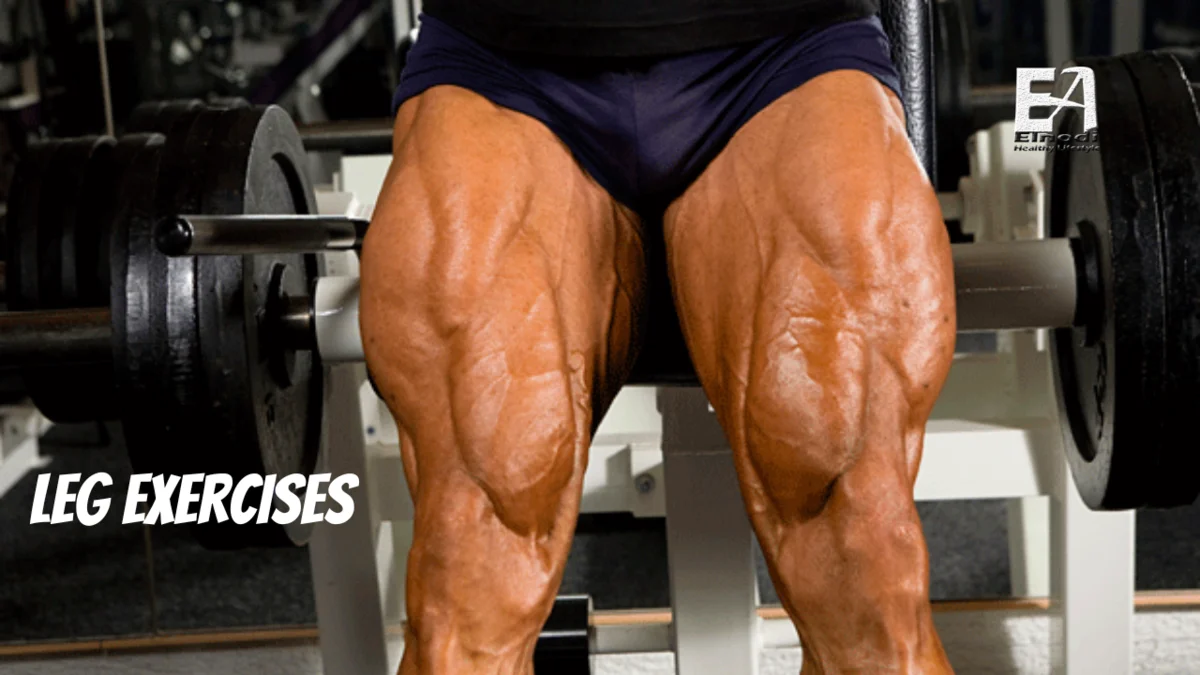Leg exercises that focus on the quadriceps (the larger muscles on the front of your thigh) are more effective at building quadriceps strength and power than programs that primarily work the hamstrings (the smaller muscles on the backside of your thigh).
Why Training Legs Is Important
Leg exercises day is one of the most physically difficult workouts of the week, making leg training no simple feat. To advance, you must work hard and be determined to overcome mental obstacles.
It’s easy to overlook leg exercises in favor of other body parts, but training your legs is essential for building a balanced physique.
In addition to encouraging the growth of your leg muscles, working out such big muscle groups raises your levels of cortisol, testosterone, and human growth hormone, which your chest day will appreciate.
Made up of the hamstrings, quads, glutes, and calves – your legs are home to some of the largest muscles in your body, and training them can help you burn calories, increase your metabolism, and build lean muscle.
Oh, and did we also mention that strengthening your legs can lower your risk of injury by enhancing your balance, coordination, and flexibility? Leg Day needs to be taken more seriously, perhaps.
Leg Muscle Anatomy

There are various muscle groups in your lower body, and it would be beyond the scope of this article to go through them all in detail. (1)
The largest muscle groups of the lower body are, in order of weight percent to total lower body muscle mass:
- Quadriceps: 21.2%
- Glutes: 20.8%
- Adductors: 14.4%
- Calves: 11.0%
- Hamstrings: 9.6%
In the list of leg exercises below, we’ll cover some of the best exercises for working these muscle groups effectively. (2)
Finally, we will show you how to combine the exercises to make an effective leg workout. Each exercise will focus on a distinct group of leg muscles.
Leg Exercises
1. Front Squat

Place a barbell at around shoulder height on a power rack. With an overhand grasp at shoulder width, grab the power and raise your elbows until your upper arms are parallel to the floor. Remove the bar from the rack and place it on your fingertips. Throughout the exercise, your elbows should be fully extended. Take a step back and place your feet shoulder-width apart, toes turned out slightly. Squat as low as you can without sacrificing your lower back arch.
2. Bulgarian Split Squat
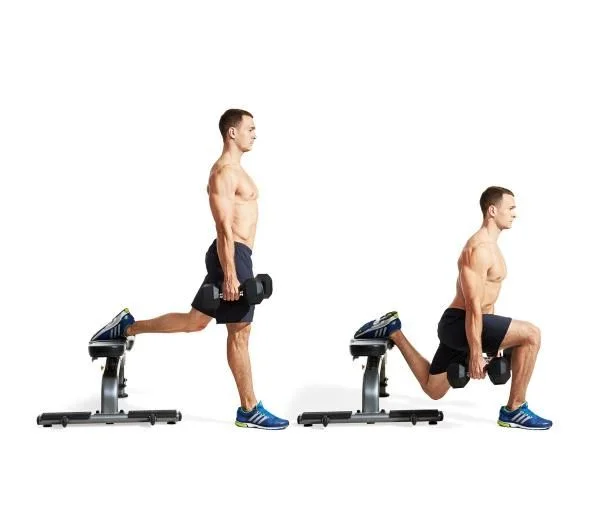
Stand lunge-length in front of a bench. Hold a dumbbell in each hand and rest the top of your left foot on the bench behind you. Lower your body until your rear knee nearly touches the floor and your front thigh is parallel to the floor
3. Romanian Deadlift

Hold a barbell at shoulder width and stand with your feet hip-width apart. Bend your hips as far back as you can. Lower the bar along your shins, bending your knees as needed, until you feel a stretch in your hamstrings. Maintain your natural arched lower back position throughout.
4. Squat
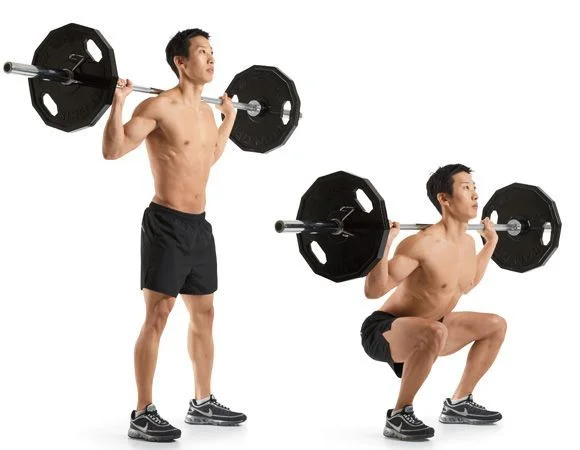
Grab the bar as far apart as you can in a squat rack or cage and step under it. Squeeze your shoulder blades together, drive your elbows up, and nudge the bar out of the rack. Step back a few steps and stand with your feet shoulder-width apart and your toes turned slightly outward. Take a deep breath and bend your hips back, then bend your knees to lower your body as far as possible without losing your lower back arch. As you descend, push your knees outward. Drive vertically with your hips to get back up, pushing your knees outward.
5. Dumbbell Stepup
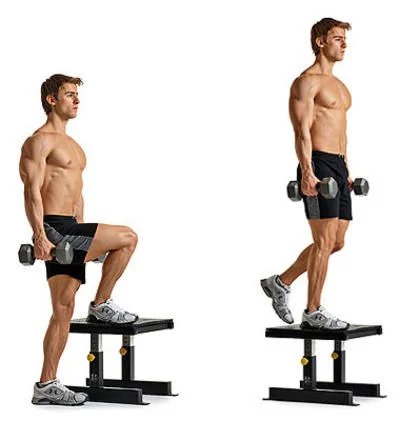
Place your foot on a bench or other elevated platform that will bring your thigh parallel to the floor when you step on it. Step up onto the bench with a dumbbell in each hand, but leave your following leg hanging off.
6. Deadlift
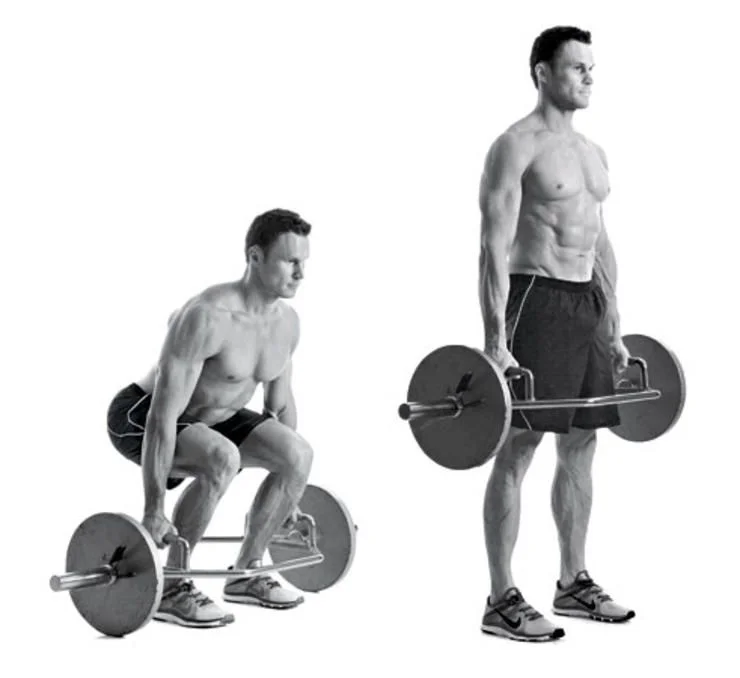
Stand with your feet hip-width apart and your shins one inch away from the bar. Take a double pronated or reverse hold on the bar, bend your knees, and press them into your straight arms. Bring your chest as high as you can and look straight ahead. Extend your hips to stand up, keeping your back flat, and draw the bar up along your legs to lock out.
7. Swiss Ball Leg Curl
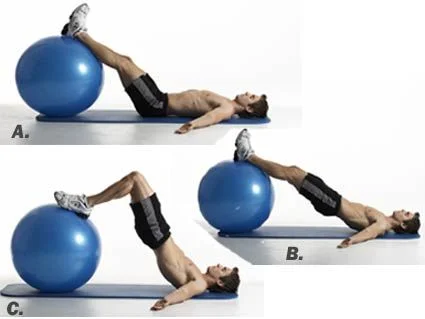
Brace your abs and lift your hips into the air while keeping your knees straight and your heels on the stability ball. Bend your knees and roll the ball back towards you. Throughout the set, keep your hips lifted.
8. Single-leg Romanian Deadlift

Hold a dumbbell in one hand and stand on the opposite leg. Bend your hips back and lower your torso until you feel your lower back is about to lose its arch. Squeeze your glutes and extend your hips to come up.
9. Leg Press

Adjust the machine’s seat so that your hips are beneath your knees and your knees are in line with your feet. Remove the safeties and bend your knees 90 degrees toward your chest before pressing back up. If you go too low, your lower back may fall out of the seat, which might cause harm.
10. Bodyweight Calf Raise
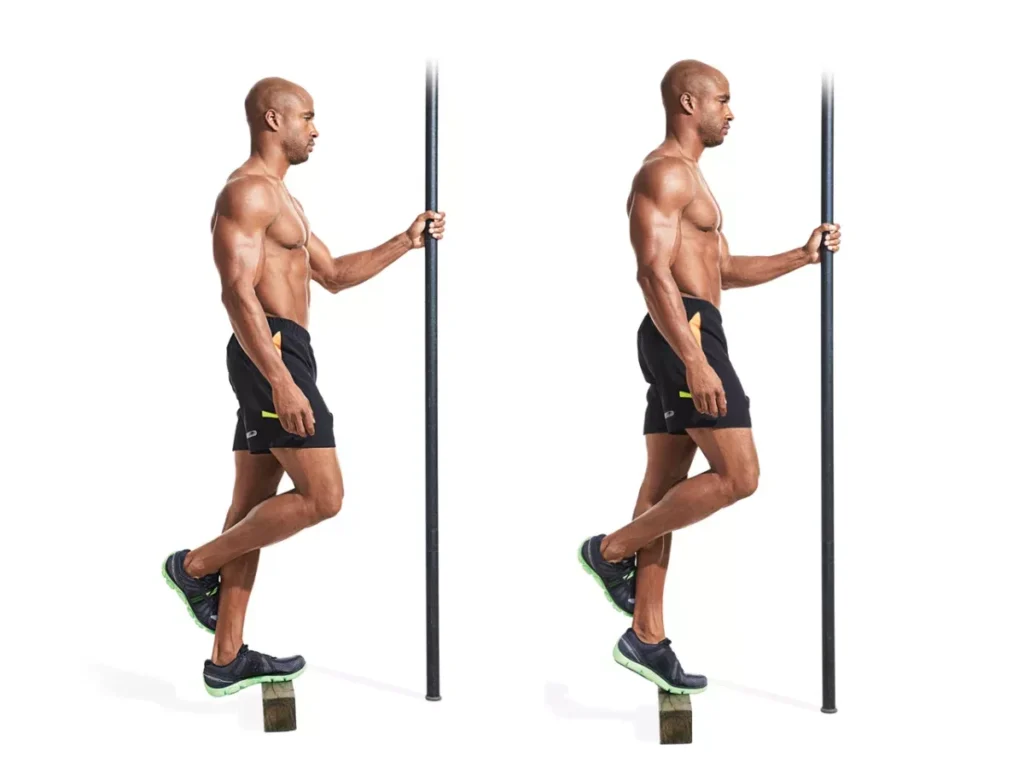
Stand with your toes on the block and a sturdy object for support. Raise your heels until they are on the balls of your feet, then descend them until you feel a stretch in your calves.
11. Walking Lunge

Stand with your feet hip-width, holding a dumbbell in each hand. Step forward with one leg and lower your body until your rear knee nearly touches the floor and your front thigh is parallel to the floor. Step forward with your rear leg to perform the next rep.
12. Pause Squat

Install a squat rack or cage. Step under the bar by grabbing it as widely apart as you can. Nudge the bar out of the rack by squeezing your shoulder blades together. Step back and stand with your feet shoulder-width apart and your toes slightly turned out. Take a deep breath and bend your hips back, then bend your knees to lower your body as far as possible without losing your lower back arch. As you drop, extend your knees. For two seconds, hold the bottom position.
13. Reverse Lunge

Step back with your right foot, keeping the dumbbells in your hands. Lower your body until your front thigh is parallel to the floor and your back knee is almost touching it. Maintain a straight posture with your torso. Return to the starting position by taking a step forward. Finish all reps on one leg, then switch. That completes one set.
14. Dumbbell Squat
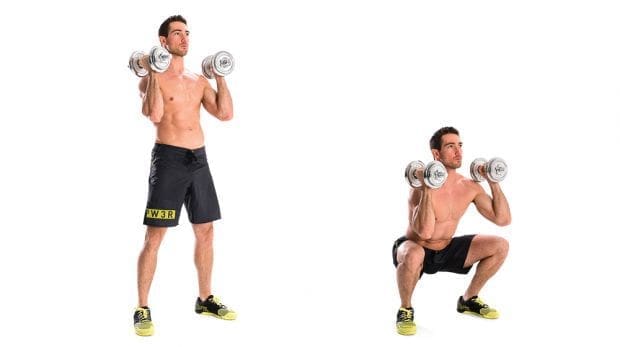
Hold the weights at shoulder level and stand with your feet shoulder-width apart and your toes turned out slightly. Squat as low as you can without sacrificing your lower back arch.
15. Kettlebell Swing
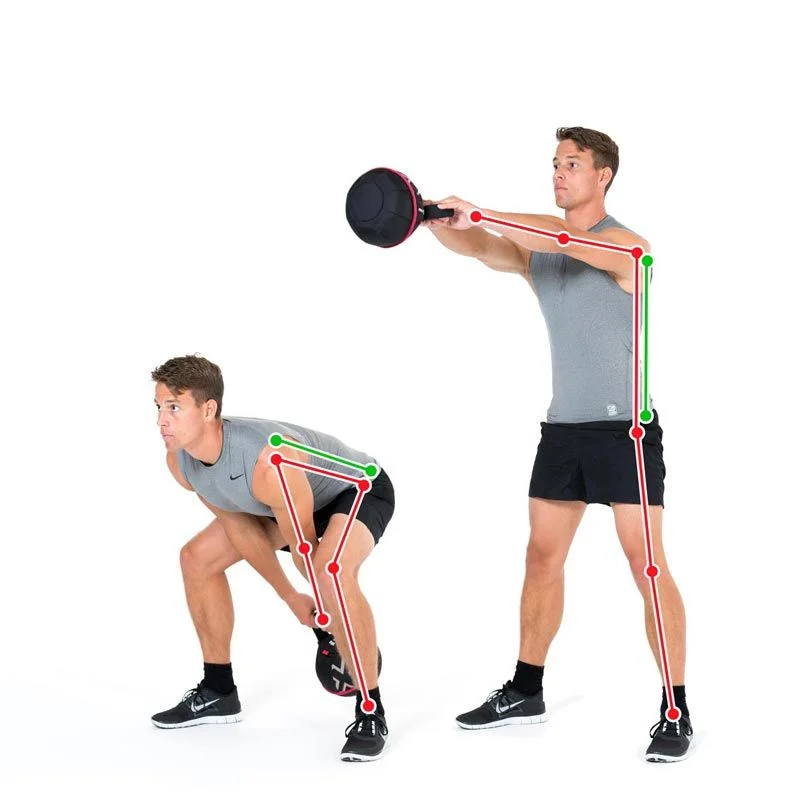
Place your weight on the floor and stand with your feet hip-width apart. Grasp the kettlebell with both hands (palms facing you) and extend your hips to lift it off the floor, keeping your lower back flat. Take a deep breath after that and bend your hips back, allowing the weight to swing back between your legs. Exhale as you extend your hips explosively, enabling the momentum to swing the weight up to shoulder level. Control the drop while using momentum to start the following rep.
16. Jump Squat
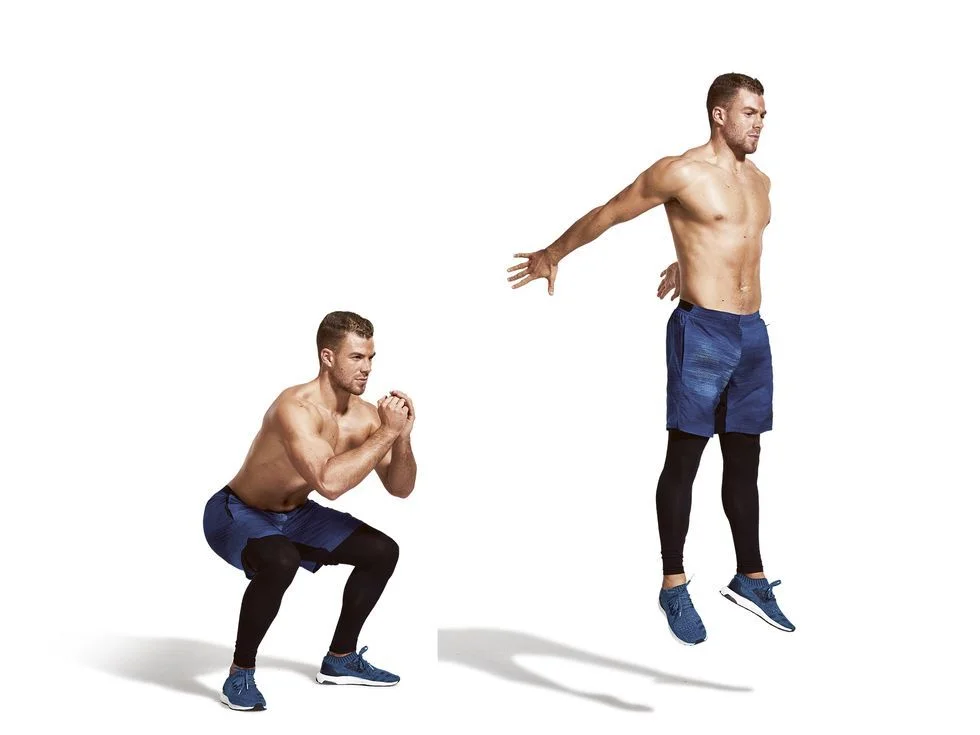
Squat with your feet shoulder-width apart until your thighs are about parallel to the floor but no deeper. Jump as high as you possibly can. Land softly on your knees and begin the next rep.
17. Barbell Calf Raise
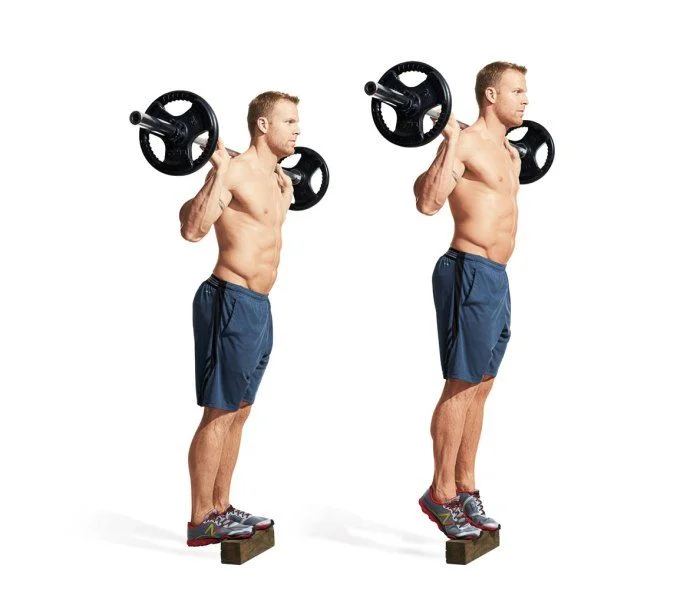
On the floor, place a block, step, or weight plate. Grasp a barbell and squat with it on the backs of your shoulders. Place your toes on the block to stretch your calves while keeping your balance. Raise your heels to land on the balls of your feet.
18. Kneeling Hip Flexor Stretch
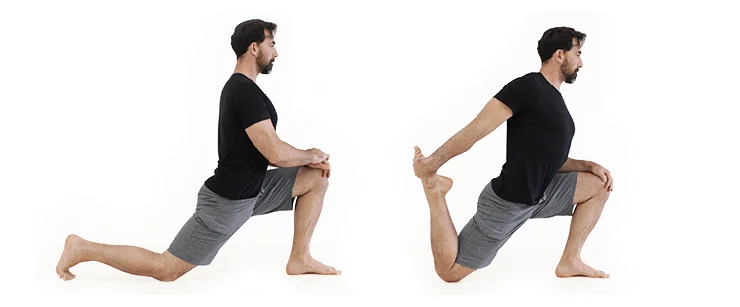
Kneel in a lunge position with your right leg in front and, if available, rest your back knee on a towel or mat. Raise your left hand over your head, leaving your right hand at your side. Push your hips forward and contract your left glute until you feel a stretch in the front of your hip. Hold the position for 30 seconds.
19. Skater Squat
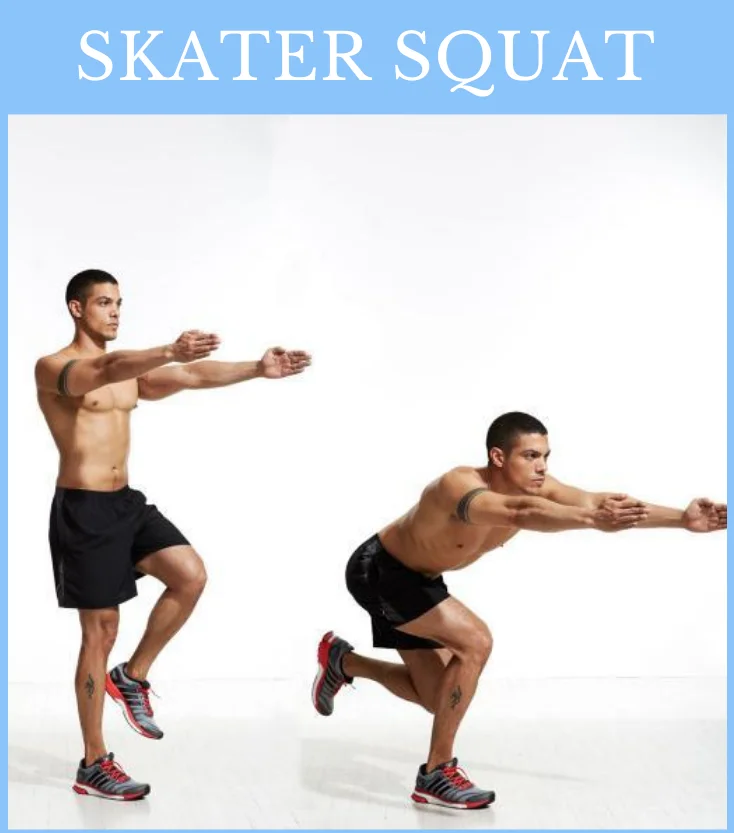
Standing on your right leg, pick up your left leg off the floor. Raise both arms in front of you as a counterweight. Use light weights or something similar to assist you in maintaining your balance. Lower your body as far as you can by bending your hips and knees. Return to your feet.
20. Jumping Calf Raise

Jump utilizing only your calves while standing tall with your feet flat on the floor. Land softly, absorbing force with a half-squat; additionally, strive to land silently.
21. Barbell Hip Thrust
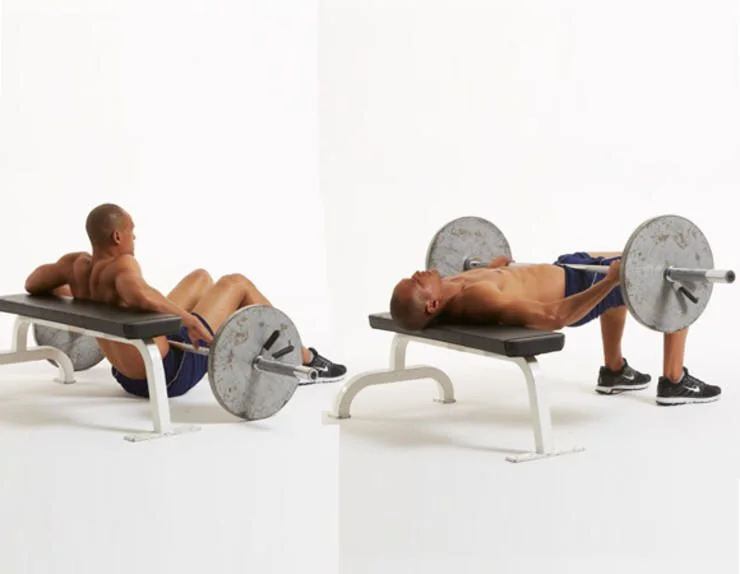
Sit on the floor with your legs outstretched and your upper back supported by a bench. Roll a weighted barbell up your thighs until it sits on your lap (for added comfort, place a cloth or mat on your hips or connect a pad to the bar). Brace your abs and drive your heels into the floor to raise your hips until your thighs and upper body are parallel to the floor.
22. Glute Bridge Walkout

Lie on your back on the floor and bend your knees so that your feet are near your buttocks. To raise your hips into the air, brace your abs and force your heels into the floor. Then, move your feet out in a V shape, taking little steps with your heels front and away from your body’s midline. Keep your hips up. Continue walking until your legs are fully stretched, then walk them back in. That is one repetition.
23. Single-Leg Glute Bridge

Lie on your back on the floor and bend both knees so your feet are near to your buttocks. Brace your abs and lift one leg up, bringing the knee to your chest. Drive the opposite foot’s heel into the floor. Bridge your body up until it is in a straight line.
24. Seated Calf Raise
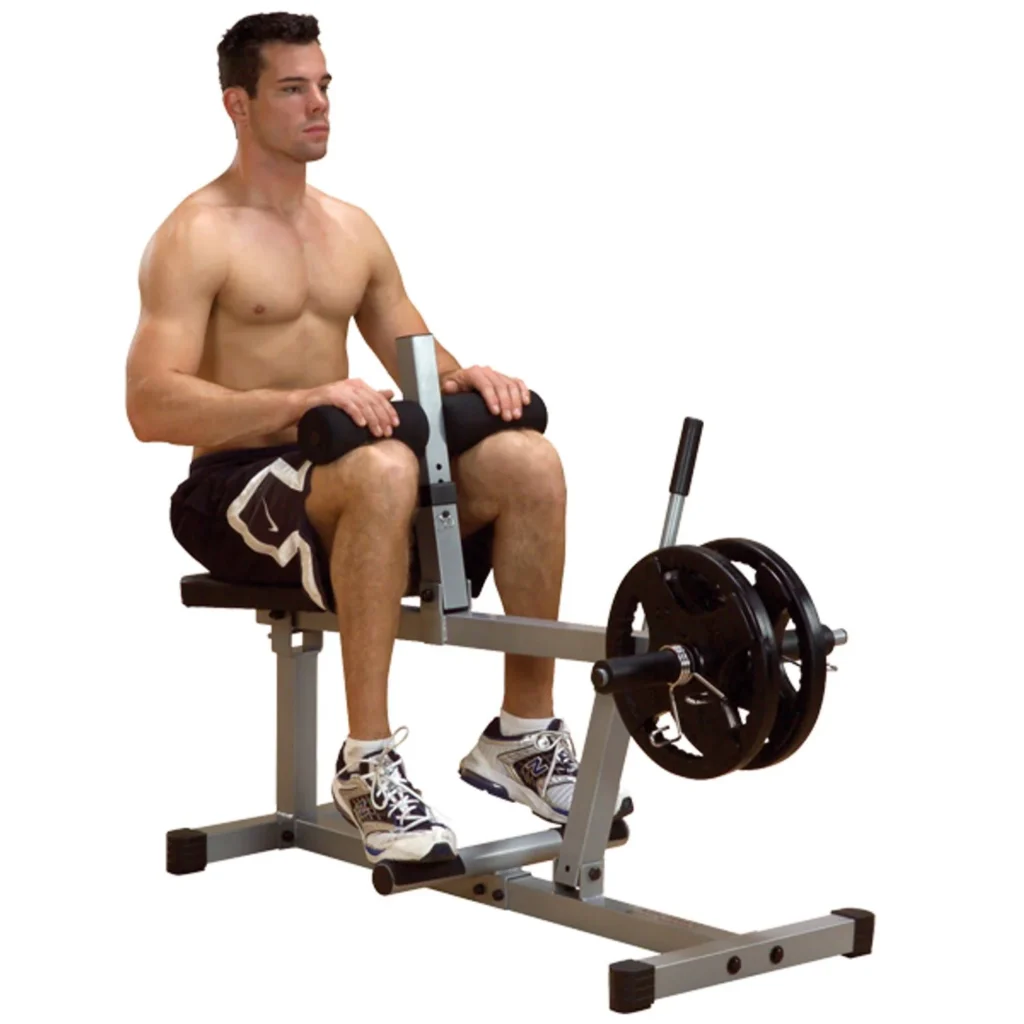
Use a sitting calf raise machine, or sit on a bench and place the balls of your feet on a block or step (for resistance, hold dumbbells on your thighs). Calf lift as indicated on the left, but with your hips and knees bent 90 degrees.
25. Swiss Ball Wall Squat

Place the ball against a wall and hold it in place with your back to it. Put your feet shoulder-width apart and turn your toes out 15 degrees. Squat as low as you can and roll the ball down the wall as you go.
26. Reverse Table-Up
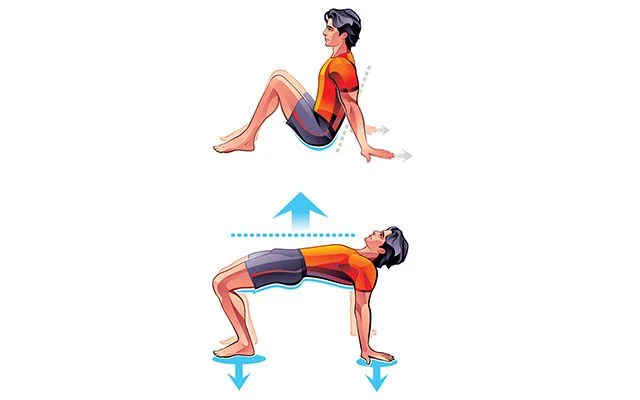
Sit on the floor and place your hands on the floor under your shoulders, fingers pointing in front of you. Place your feet shoulder width and squeeze your glutes. Push through your heels as you bridge your hips up. Your body should form a table, with your torso and hips parallel to the floor. Hold for two seconds.
27. Kettlebell Press-Out
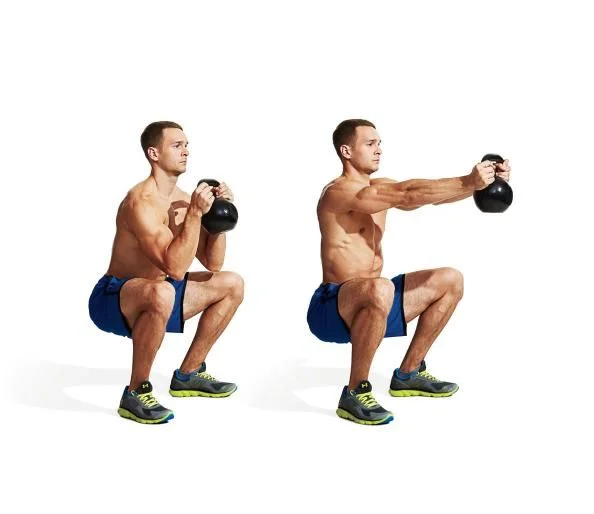
Hold the weight at shoulder level, close to your chest, with both hands on the grip and palms facing each other. Squat as low as you can, then stretch your arms and press the bell straight out in front of you. Return it to your chest and repeat for reps while remaining in the squat position.
28. Overhead Lunge
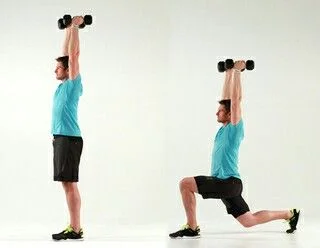
Step forward with your left leg while holding the bar overhead. Lower yourself till your left thigh is parallel to the floor and your back knee is almost touching it.
29. Standing Calf Raise
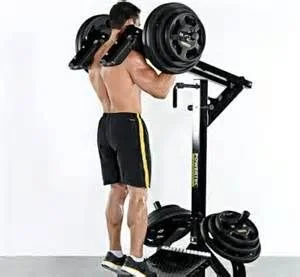
Use a standing calf raise machine, or stand on a block or step with a dumbbell in one hand and a support object in the other. Reduce the angle of your heels to the floor until you feel a stretch in your calves. Drive your footballs into the footplate and contract your calves, lifting your heels as high as possible. On each rep, keep the drop under control.
How Many Sets and Reps Should You Do of Each Leg Exercise?
Depending on whether muscular growth or strength improvements are your top priorities, you should change the weights you use and the number of reps you execute per set accordingly.
While there is considerable overlap between the two, here is how each goal is generally best achieved:
- Strength is best gained from heavy weights and a low rep range, around 1–6 reps per set.
- Muscle growth is best attained from medium weights and a moderate-to-high rep range, around 6–15 reps per set or up to 20 reps per set.
Free-weight compound exercises, such as the squat, are typically better suited to heavy weight and low reps, whereas isolation exercises, such as the leg curl or leg extension, are more suited to a medium-to-high rep range.
The amount of sets you execute of each exercise has a dose-response relationship on your muscle growth and strength gain, with more sets resulting in bigger gains of up to ten sets per muscle per week for beginners.
Experienced lifters and bodybuilders may benefit from larger training volumes, possibly up to 15 to 20 sets per muscle per week.
FAQs
What is the best exercise for your legs?
what 3 exercises will help strengthen legs?
how can a woman build leg muscle fast?
References
1 .Hoyle, G. (1955). The anatomy and innervation of locust skeletal muscle. Proceedings of the Royal Society of London. Series B-Biological Sciences, 143(911), 281-292.
2. Paul, A. C. (2001). Muscle length affects the architecture and pattern of innervation differently in leg muscles of mouse, guinea pig, and rabbit compared to those of human and monkey muscles. The Anatomical Record: An Official Publication of the American Association of Anatomists, 262(3), 301-309.


